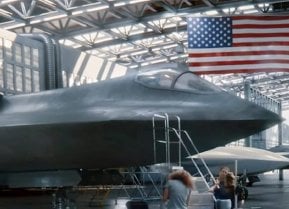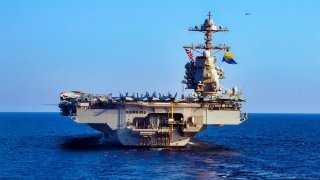Is China at War in the South China Sea?
Is China at war in the South China Sea? You be the judge. Beyond dispute its conduct is warlike—and that has implications for those resisting its transgressions.
Is China at war in the South China Sea? You be the judge.
Beyond dispute its conduct is warlike—and that has implications for those resisting its transgressions. On June 19 the BBC chronicled what it termed the latest in a string of encounters between Chinese sea forces, principally the China Coast Guard, and the Philippine Coast Guard and Navy. China Coast Guard cutters intercepted Philippine ships attempting to deliver supplies to Second Thomas Shoal, where soldiers occupy the grounded hulk Sierra Madre to stake Manila’s claim to that contested feature.
The encounter turned ugly. General Romeo Brawner, the Philippine Islands’ seniormost military commander, reported that Chinese vessels rammed their Philippine counterparts, costing one Philippine sailor a thumb. Ramming has been part of the Chinese repertoire for some time. This time, however, Chinese coastguardsmen also brandished bladed weapons such as swords, knives, and spears. According to Brawner, they boarded Philippine ships and made off with weapons and other property. He lambasted the China Coast Guard for “piracy,” adding that “they have no right or legal authority to hijack our operations and destroy Philippine vessels operating within our exclusive economic zone.”
Not quite.
The reality is even worse than General Brawner lets on. Pirates are private seafarers who raid shipping for private gain. The China Coast Guard is a public agency of the People’s Republic of China—in other words, an implement of Chinese statecraft—that’s using methods favored by corsairs since antiquity, against shipping from a neighboring state. Brigandage is Chinese foreign policy in action.
In a sense Beijing has done us all a favor. China-watchers, yours truly among them, have long classed Chinese maritime strategy in the South China Sea as unspooling in a “gray zone” short of open combat. The murk makes it hard for China’s opponents to mount countermeasures: push back too hard against aggression and you look like the aggressor. But the Southeast Asian gray zone is barely gray any more. The situation is resolving into black-and-white clarity owing to domineering Chinese tactics.
Strategic clarity lends itself to solutions.
Still, this doesn’t settle the question whether China is at war. Let’s consult the strategic canon for counsel. In his masterwork On War, Prussian soldier-scribe Carl von Clausewitz defines war as “an act of force to compel our enemy to do our will” (Carl’s italics). It scarcely passes the giggle test to argue that China is not using force to compel others to do its bidding in Southeast Asia. Ramming and boarding, its tactics of choice, were time-honored tactics in naval warfare for many centuries. In this age of precision-guided ordnance, few naval captains relish ramming an enemy ship. They prefer to stand off and fight at a distance. But ships have rammed each other in extreme circumstances, in wartime, within living memory. This is not a relic of bygone times.
Ramming may have fallen out of vogue, then, but it remains in the panoply of naval force. It is an act of armed force. Ergo, China uses force as an instrument of policy, and it does so as a matter of routine.
For the sake of argument, though, let’s raise the bar for defining war. Small linguistic choices can make a huge difference in how we comprehend the world around us. “Violence” is a more accurate translation of the German word Gewalt than is “force,” the word used in the standard (1976) edition of On War. Let’s make the substitution and set this as our standard for judging Chinese conduct: “an act of violence to compel our enemy to do our will.” Have Chinese sea forces—the China Coast Guard, backed by the maritime militia and People’s Liberation Army Navy—resorted to acts of violence to compel others to accept Beijing’s unlawful claims in the South China Sea?
If so, China is definitely at war by Clausewitzian metrics.
This is trickier. Yes, Chinese coastguardsmen flourished edged weapons at their Philippine counterparts during ramming and boarding operations. But they evidently refrained from striking even as they menaced Filipino sailors. And yet. Clausewitz still might adjudge their tactics at Second Thomas Shoal as acts of war. The key is how you interpret the relationship between “combat” and war. Clausewitz proclaims that combat between fighting forces is the only means for waging war, but at the same time he appends the caveat that combat may be far removed “from the brute discharge of hatred and enmity” of hand-to-hand fighting. It is less impassioned. It is not necessarily wholesale slaughter.
For him, combat—a term we usually equate to fighting—comes in countless shades of gray. Some involve minimal if any violence.
Puzzling, I know. Clausewitz maintains that “all that occurs in war takes place through military forces, but where military forces . . . are used, the idea of combat must necessarily underlie everything.” Ideas matter. Combat happens if the contenders believe fighting might break out, and if they project who would win or lose if it did. “If the idea of combat lies at the foundation of every employment of armed forces,” writes Clausewitz, then combat has occurred—even if no actual fighting takes place. And virtual battle affects what commanders do on real battlegrounds. One force might quit the field rather than face what it reckons to be an unbeatable foe. Or it might relent if a foe can’t be overcome at a cost acceptable to the prevailing government and society.
In fact, war through perceptions of relative power and resolve is what peacetime deterrence and coercion are all about. A rational contestant abstains from actions that an opponent warns would trigger unacceptable risks or costs. Or the opponent issues a fearful threat that coerces the leadership into doing something it prefers not to do. This is China’s game in the South China Sea. It outmatches any single competitor and thus can hope to overawe its neighbors into submission, one by one, without hazarding major battle.
The Clausewitzian conception of war is congenial to Communist China. Clausewitz points out that aggressors love peace! They prefer for their antagonists to submit without a fight. Xi Jinping & Co. are quintessential aggressors. They aspire to win with the minimal violence necessary—none, if possible—holding down the perils, costs, and reversals of fortune endemic to warfare. Nor is this anything new in China’s way of diplomacy and war. Founding Chinese Communist Party chairman Mao Zedong paid homage to Clausewitz but with a twist. After ruminating on the relationship between war and politics, Mao vouchsafed that “politics is war without bloodshed while war is politics with bloodshed.” In other words, the party means to win. It will do so through hardscrabble peacetime politics if possible, by force of arms if need be.
By any means necessary.
The warlike impulse pervades everything the party does—in peacetime and wartime alike. That’s why Chinese commentators speak of waging “war without gunsmoke,” and other catchy slogans, in maritime Asia. In that sense it is certainly accurate to conclude that China sees itself as at war. And it’s at war on a 24/7/365 basis. Ponder the asymmetries with competitors that ardently desire not to be at war with China. Competitors such as the Philippines or its ally, America.
Now, escalation in Southeast Asia was bound to happen sooner or later. You need not subscribe to the notion that China has been pursuing a maritime insurgency to overthrow the regional order to notice that it has been employing insurgent methods at sea. It has. So insights into insurgent and counterinsurgent warfare apply.
The ultimate goal of any insurgency—by definition the weaker combatant—is to stop being an insurgency. This demands a strategy of patience. A Maoist insurgency does strategically defensive things while it remains outclassed by the counterinsurgent. It harries the incumbent power’s army around the margins, enfeebling hostile fighting forces while it musters resources and manpower. If the defensive effort succeeds, the insurgency achieves an interlude of strategic parity with the incumbent. Warmaking starts to take on an offensive tincture. Continued success lets the insurgents stage a transition to a conventional counteroffensive and win a decisive battlefield victory.
The erstwhile weak make themselves the strong—and triumph.
The thuggish conduct of Chinese maritime forces of late could signal that Chinese Communist magnates have decided the time is ripe to seize the offensive. The balance of forces favors them. If so the China Coast Guard and fellow sea services will unleash more and more overbearing tactics. They are already hovering right at the brink between peace and war. They could press their advantage. That being the case, it behooves Southeast Asian states and their extraregional allies and partners to embrace the reality that a martial mentality reigns in China—and to ponder what they are prepared to do should Beijing escalate further. Inaction courts defeat and disaster.
Apathy kills.
About the Author: Dr. James Holmes
James Holmes is J. C. Wylie Chair of Maritime Strategy at the Naval War College and a Distinguished Fellow at the Brute Krulak Center for Innovation & Future Warfare, Marine Corps University. The views voiced here are his alone.


